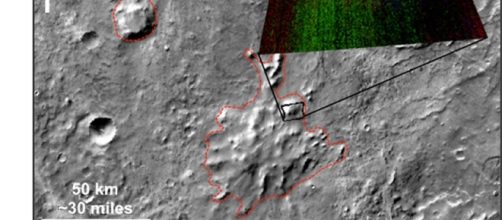Scientists using the scientific instrumentation on board NASA´s Mars Reconnaissance Orbiter (MRO) found indications of what may have been ancient volcanoes erupting below ancient ice sheets. The finding was made on a valley named Sisyphi Planum, where a group of mountains are believed to have existed underneath. The study was conducted with the mineral-mapping Spectrometer-part of MRO scientific instruments.
It was discovered that volcanoes erupted underneath an ice sheet on the red planet several miles of distance from the present ice caps on Mars.
The research not only demonstrates the presence of volcanoes, but also an extensive crust of ice and the conditions favorable for the development of microscopic life.
Volcanic ice eruptions on earth
Sub-glacial volcanoes are formed by eruptions underneath the surfaces of glaciers or ice sheets. During an eruption then heated lava melts the overlying ice, cooling the lava and forming melt water lakes over which layers of tephra or tinder pile up. If the erupting volcano reaches the top of the melt water lake, or the lake is drained of water by natural occurring phenomena, the erupted material from the volcano is deposited in pilling caps of rock.
Glacial Volcanoes on Mars
Mounds and ridges on Mars are similar to tuyas and tindars formed on earth.
Some of these volcanic features on Mars, such as those found on Valles Marineris, are much larger than the sub ice volcanoes found on earth, however, ridges west of Elysium Mons and mesas close to the poles are more like their terrestrial counterparts in size.
Sisyphi Montes
This is a mountain range of circular mountains located within the Sisyphi Planum, enclosed by circum-polar and circum-hellas highlands. It has a diameter of 200 km (124 Miles). The landscape features of this region show a variety of summit craters, channels and flat mountain tops, suggesting a volcanic origin. Scientists believe this features correlate to those formed by sub glacial volcano eruptions.
The graphic of Sisyphi Montesshows an area of around 230 km (130 miles).
Spectrometerdata is shown on the overlay box at right and the red outlines indicate the region on the map covered from this observation. The color key on the upper left indicates the minerals found on this region, which correspond to the minerals-sulfates and iron oxides- often found on sub glacial volcanoes on earth.
These new findings may provide a better understanding of planet formationand advanced science knowledge for future explorations of the martian surface.

